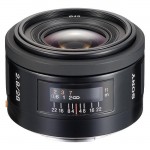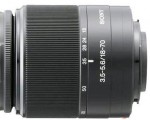Up until recently I did not pay much attention to the fundamentals of photography. I shot what i liked and tried to be artistic and creative with it. But I did not know much about aperture and shutter speed or composition (still have a lot to go on that one) or the equipment I was using. As I get more serious about photography and am trying to continuously improve and take my photography to the next level I am getting more into the nitty gritty. So I am reading, surfing the Internet and finally taking an introductory course to digital photography at a local community college.
I’m sure I am not the only amateur photographer out there who has been winging it. So I am going to pass along some of my “discoveries” through Photography 101 posts. I do not anticipate that these are going to be life altering discoveries. In fact they are the 101 of photography, the basics. But sometimes we are so excited to get shooting we skip right past the basics. Even though you may not need to (or want to) study every detail, I hope these are things that can help you improve your photographs as they are doing for me.
The first Photography 101 is on lenses.
Lenses fall into three main categories and are measured in focal length (although focal length is not the only characteristic you want to consider when purchasing a new lens). The chart at the left outlines those three categories. But keep in mind that the “normal” lens can vary slightly and it is safer to say the focal length of a normal lens is about 5o mm and the wide and telephoto options fall into place accordingly.
Normal is called such because it is considered the lens that is as close to what the naked human eye would see, about 50 mm. A normal lens is typically a prime lens meaning that is has a fixed focal length without zoom capabilities. Some of the advantages of such a lens are that they are generally cheaper and produce a slightly better quality picture.
 Wide angle lenses have a large depth of field making it easier to have both the foreground and background in focus. They also, as the name implies, present a view that is wider than normal. With focal lengths less than 50 mm, 28 mm is considered a standard wide angle lens. 24 mm and 35 mm lens options are also common. Fish eye lenses also fall into the wide angle category. Although it is an extreme wide angle that does not correct for distortion. You have probably seen these images that are often times circular.
Wide angle lenses have a large depth of field making it easier to have both the foreground and background in focus. They also, as the name implies, present a view that is wider than normal. With focal lengths less than 50 mm, 28 mm is considered a standard wide angle lens. 24 mm and 35 mm lens options are also common. Fish eye lenses also fall into the wide angle category. Although it is an extreme wide angle that does not correct for distortion. You have probably seen these images that are often times circular.
 The final category is the telephoto lens. Lenses with a focal length greater than 50 mm (give or take) fall into the telephoto category. Standard telephoto lenses will usually fall between 80 mm and 130 mm. Medium focal length telephoto lenses will usually fall between 135 mm and 300 mm while super telephotos can be found all the way up to 1000 mm.
The final category is the telephoto lens. Lenses with a focal length greater than 50 mm (give or take) fall into the telephoto category. Standard telephoto lenses will usually fall between 80 mm and 130 mm. Medium focal length telephoto lenses will usually fall between 135 mm and 300 mm while super telephotos can be found all the way up to 1000 mm.
A few other terms to keep in mind:
prime – a prime lense can fall into any category. It simply means the lens has a fixed focal length.
 zoom – It is often confused with telephoto, but zoom and telephoto are not one and the same. Zoom means the lens has a focal length range, in contrast to prime, allowing you to zoom from one focal length view to another. For example my 18 – 70 mm lens lets me zoom between an 18 mm wide angle view and a 70 mm telephoto view. Any category can have zoom lenses and they can cross between categories.
zoom – It is often confused with telephoto, but zoom and telephoto are not one and the same. Zoom means the lens has a focal length range, in contrast to prime, allowing you to zoom from one focal length view to another. For example my 18 – 70 mm lens lets me zoom between an 18 mm wide angle view and a 70 mm telephoto view. Any category can have zoom lenses and they can cross between categories.
Here are the lenses I currently own:
- 18 mm – 70 mm
- 28 mm prime wide angle
- 100 mm – 300 mm telephoto
- 28 mm – 90 mm
I am hoping to add a 500mm telephoto soon.





Leave a comment